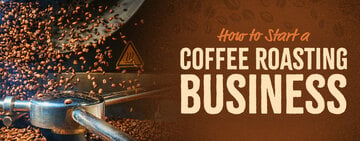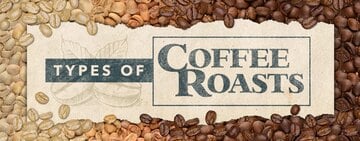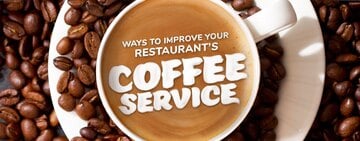
Coffee Brewing Methods
Last updated on 3/15/2022Java, Joe, liquid energy, and brew are just some of the terms used to describe one of the world’s most highly consumed beverages - coffee. Did you know different coffee brewing methods affect the taste and aroma of your coffees? Understanding the types of brewing methods helps you choose the right coffee equipment for your business and improves your staff’s knowledge and success!
Shop All Coffee Shop EquipmentWays to Make Coffee
Once coffee beans have been harvested and roasted, it’s time to convert them into a liquid. Understanding the different brewing methods is essential when running a successful cafe since each technique produces a different flavor, brew time, and caffeine level for your customers’ favorite drinks.
1. Drip Coffee
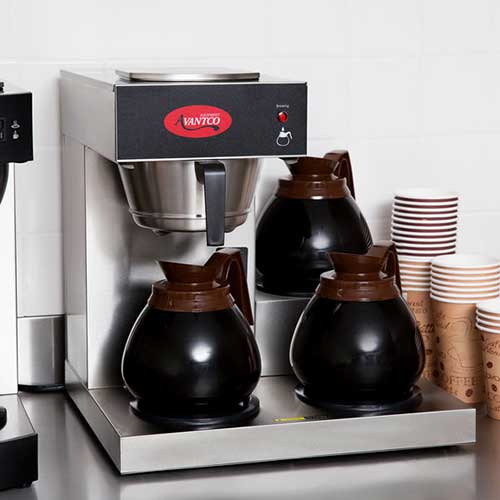
Coffee that comes from a drip coffee maker is brewed through a filter containing the ground, coarse coffee beans as boiling water is “dripped” on top. The filter leaves behind the ground coffee beans as liquid passes through and into a decanter or coffee pot that is then used for serving.
Making drip coffee takes more time compared to using an espresso machine since hot water is in contact with the ground coffee beans for a longer period. When comparing drip coffee to pressed, drip coffee can produce coffee in a faster amount of time since water doesn't need to be steeped.
How to Use a Drip Coffee Maker
Drip coffee makers are easy to use and don't require the mastering of any skills, which makes them ideal for busy diners and restaurants. Just follow the simple instructions below and make sure the decanter is in place before you brew!
- Place a new coffee filter in the drip coffee maker.
- Add ground coffee beans to the filter in a ratio of 2 tablespoons to every cup of water.
- Add filtered water to the reservoir container.
- Program the machine to brew at a certain time, or press the brew button to start working immediately.
2. French Press Coffee
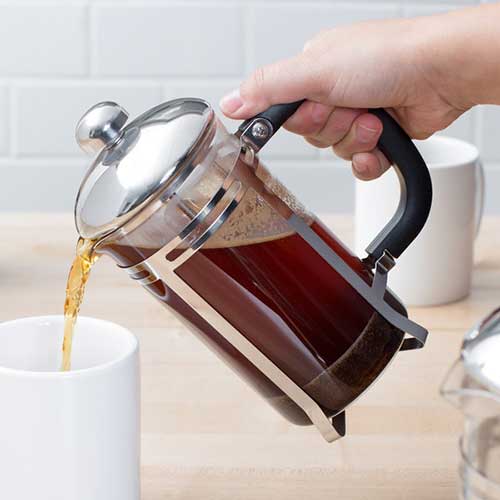
French pressed coffee is intended to be consumed immediately after brewing. Some coffee drinkers believe that making french press coffee produces a beverage that contains a stronger flavor compared to a drip coffee machine since it allows the oils from the ground coffee beans to mix with the water.
A french press features a cylindrical glass carafe with a mesh filter inside which separates the ground coffee from the hot water. When it’s time to pour and serve, a lever is pushed down which strains and separates the coffee grounds from the brewed coffee, leaving the grounds on the bottom and liquid coffee above the filter. Before brewing with a french press coffee maker, coffee should be ground to a medium or coarse grind to obtain the best flavor possible. This also prevents any grounds from passing through the filter.
A benefit of using a french press compared to a drip coffee maker is that you’re able to regulate the temperature of the water so your beans reach the maximum potential flavor possible when brewing. Also, filters aren’t needed since a pressing screen is used at the very end to separate the grounds from the liquid coffee.
How to Use a French Press
Follow these steps to make french press coffee:
- Add ground coffee to the bottom of the french press carafe. Use a ratio of 1 tablespoon ground coffee to 4 oz. of water.
- Bring water to a boil (about 195 degrees Fahrenheit) and add to the french press carafe. Stir to mix with the coffee grounds.
- Place the lid and filter on top of the press and steep 90 seconds to 4 minutes depending on your desired flavor. The longer you let your coffee steep, the stronger the flavor will be.
- Press down on the french press “plunger” with a firm, yet slow motion to strain the beans from the liquid brew.
3. Espresso Machine Coffee
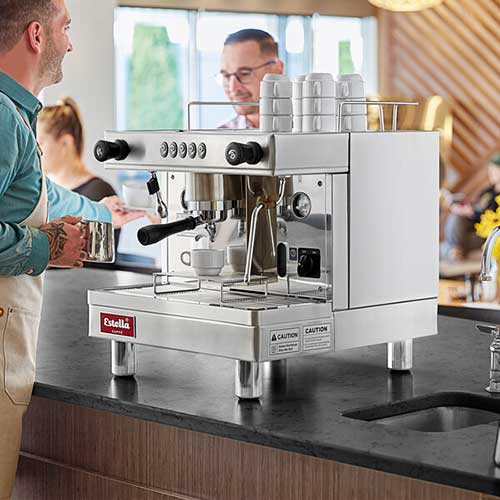
Besides the method of brewing, another difference between dripped, french pressed coffee, and espresso is the texture and size of the types of coffee grounds used. Espresso beans are ground much finer than drip and french pressed coffee and resemble the consistency of powdered sugar, which are then brewed using an espresso machine. The ground coffee beans are placed into a portafilter, which is the handled part of an espresso machine that attaches to the machine’s gasket. Next, the brewing process begins when water is pressurized through the beans to produce a liquid.
Espresso machines are designed to force a small amount of hot water through the coffee grounds at a very fast speed, and a single shot of espresso can take as little as 20 seconds to brew. Espresso is stronger in taste than other brewing methods. It also has a creamier mouthfeel because a small layer of froth, called crema, is produced during brewing.
How to Use An Espresso Machine
Follow these steps to use an espresso machine:
- Grind coffee beans to a consistency of powdered sugar.
- Pour filtered water into the espresso machine’s water chamber. Use 1 oz. of water for every shot of espresso desired.
- Add espresso grounds to the portafilter.
- Use a tamping tool to pack the grounds into the portafilter.
- Place an espresso cup underneath the espresso machine’s spout to catch the liquid.
- Place the portafilter into its holder and lock into position.
- Press the “start” button and espresso will be extracted in as little as 20 seconds.
4. Pourover Coffee
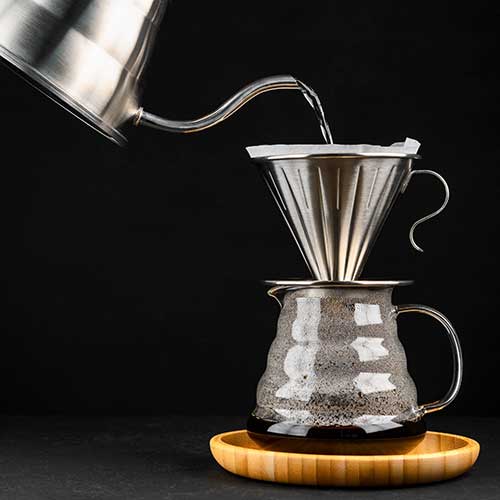
The pourover coffee method is a slow, careful technique that requires steady hand pouring. It’s not efficient for large volumes of coffee, but it’s the best method for showing off the flavor and aroma of small-batch single origin roasts. To perform the pourover brewing method, you'll need coffee grounds, paper filters, a gooseneck water kettle, and a pourover dripper. Drippers are funnel-shaped vessels that hold the filter. Some pourover drippers have a carafe that collects the freshly brewed coffee, and some drippers are meant to be placed over a coffee mug. Follow these steps to make coffee with the manual pourover method:
How to Make Pourover Coffee
- Boil filtered water and transfer it to a kettle with a gooseneck spout. A long, skinny spout makes it easier to control the pour.
- Place the coffee filter into the dripper funnel and rinse it with hot water.
- Grind your coffee beans to medium or medium-fine and add the desired amount to the filter.
- Pour a small amount of water over the grounds and let them sit for 30 to 40 seconds. This is called blooming the beans and it releases any carbon dioxide in the grounds.
- After blooming the grounds, start pouring water over the coffee very slowly. Use a circular motion and make sure to saturate all grounds. It takes about three minutes for the brewing process to be complete.
5. Cold Brew Coffee
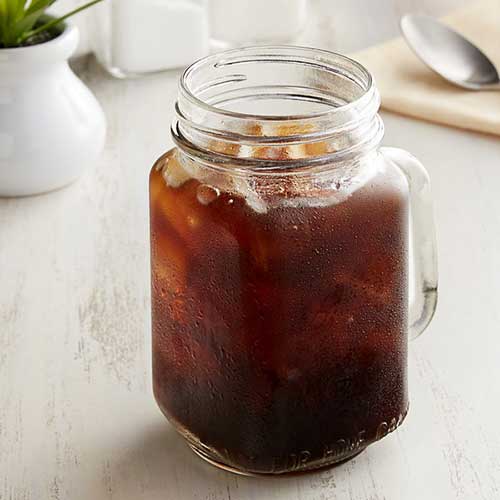
The process for making cold brew coffee is a lot different than standard brewing. First of all, the coffee is steeped in cold or room temperature water instead of hot water. The steeping process itself lasts for an extended period, usually overnight. This style of brewing produces coffee that’s highly concentrated with higher amounts of caffeine than drip coffee.
Cold brew coffee has become popular for several reasons. It has a smoother taste with less acidity and bitterness than drip coffee. You can also make it in large batches that keep in the refrigerator for periods up to two weeks. This is useful for coffee shops and cafes that sell large volumes of coffee.
If you want to learn how to make your own cold brew, check out our large batch cold brew recipe guide. We’ll walk you through each step, from grinding to storage.
Whether you run a busy coffee shop, bakery, bistro, or diner, understanding the various coffee brewing techniques is essential to running a successful coffee service. Now that you understand the various methods of brewing coffee, you can create a wide variety of coffee drinks ranging from cappuccinos and lattes to breves and mochas. With this basic knowledge, you and your staff will be able to adequately determine which type of coffee and technique is best suited for your business, as well as your customers’ needs.

